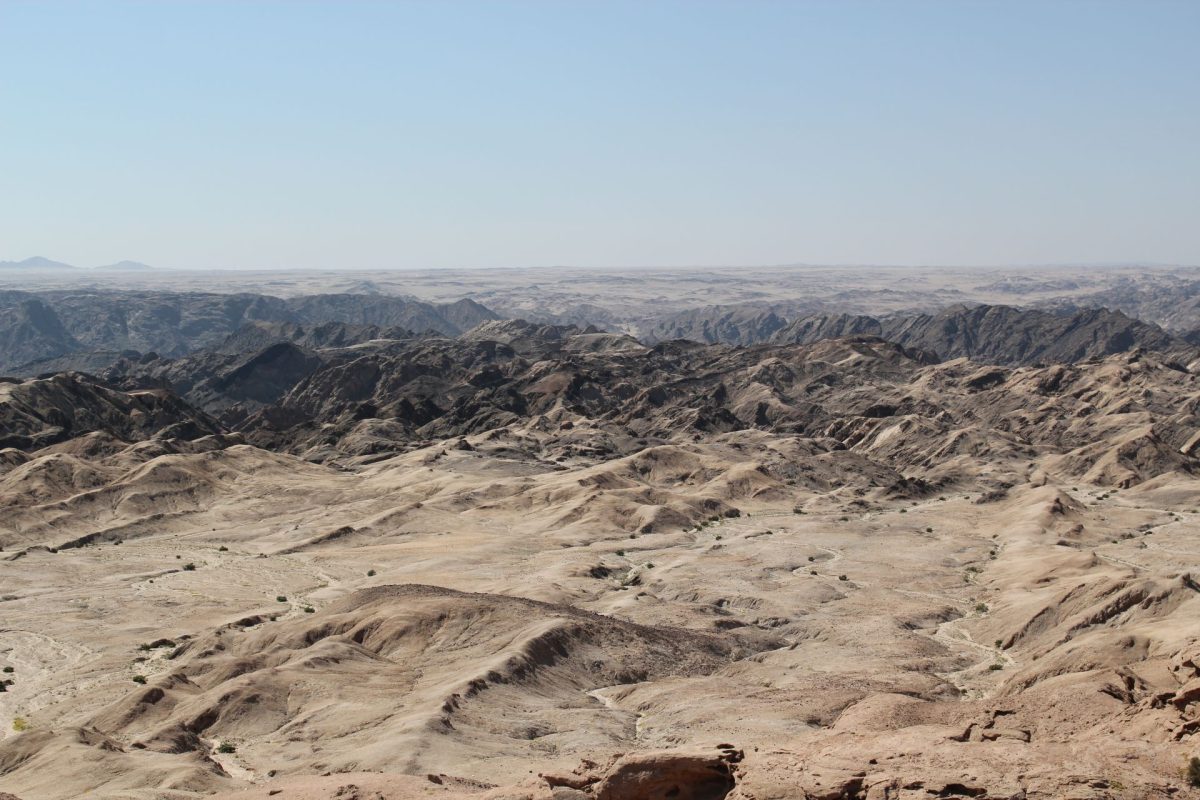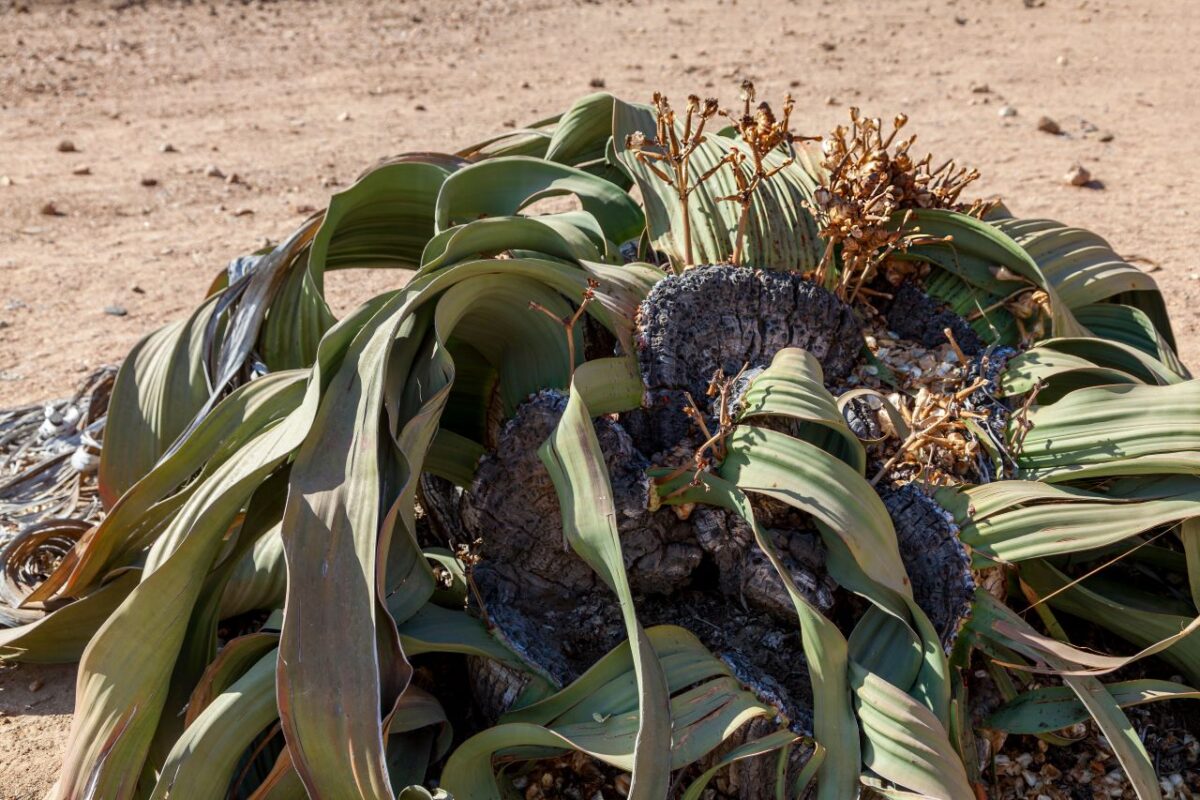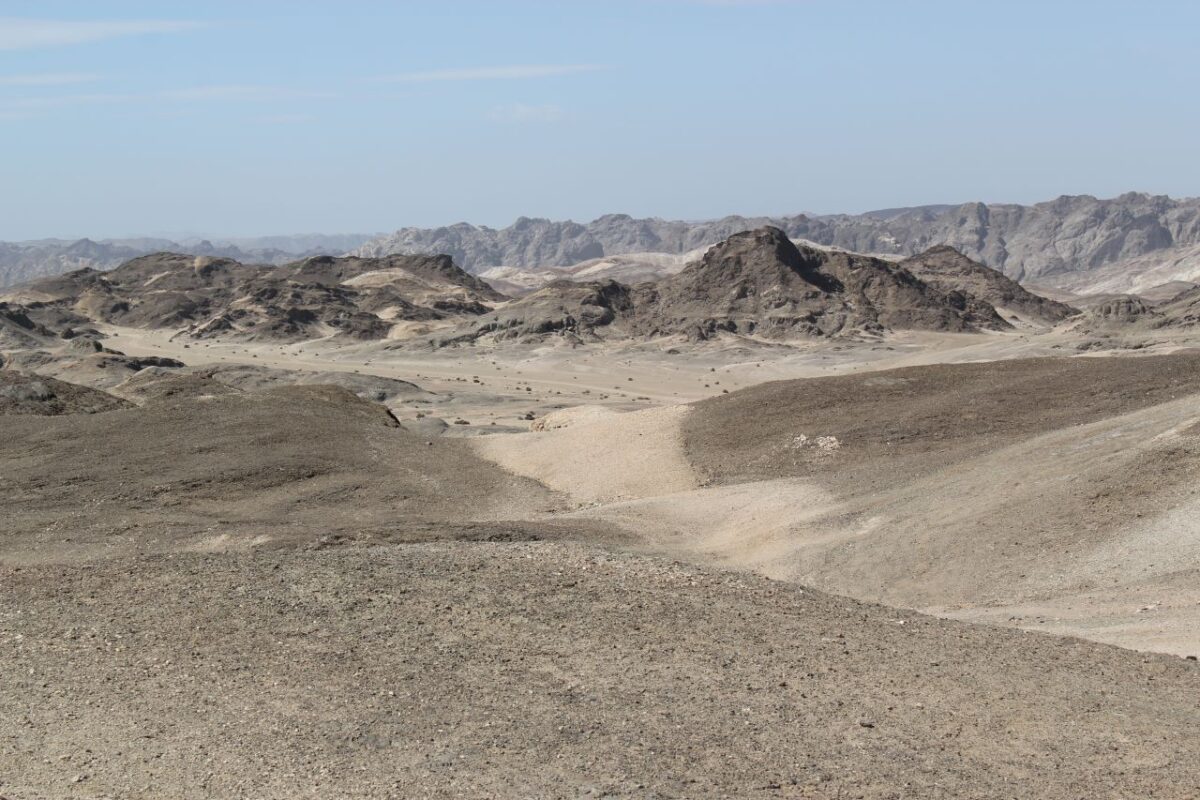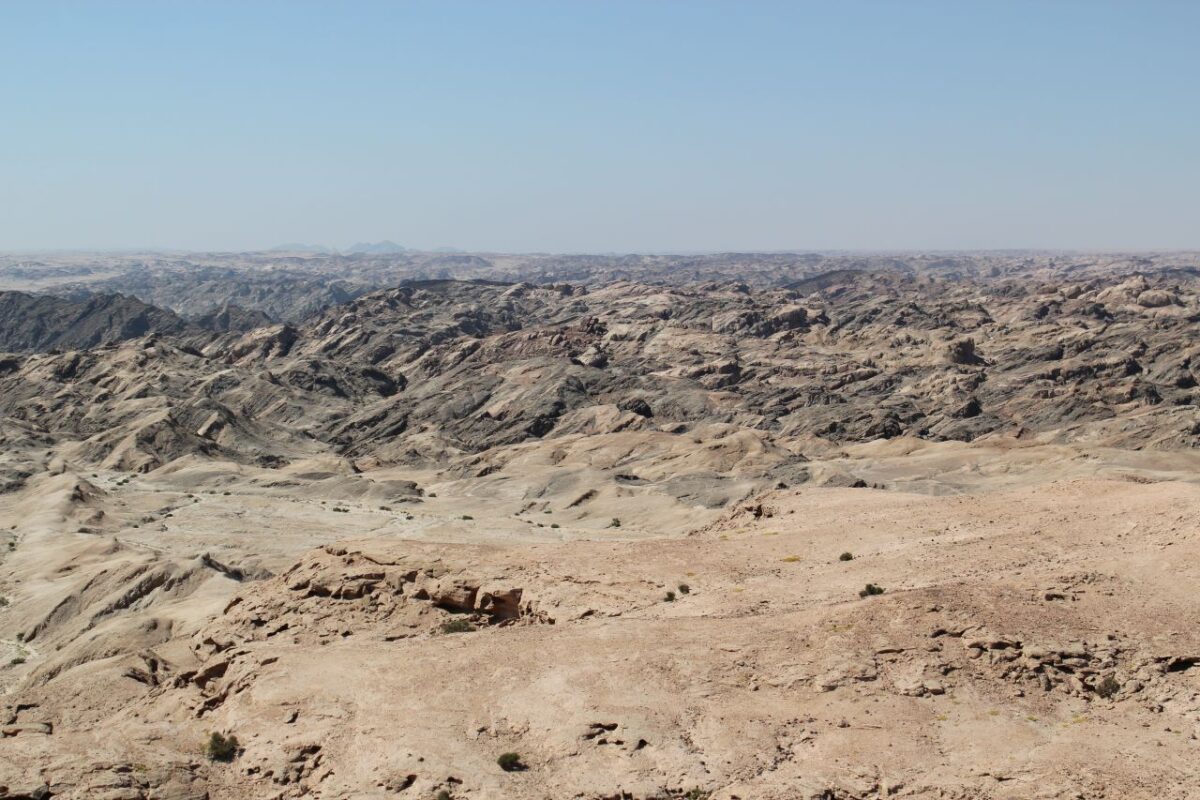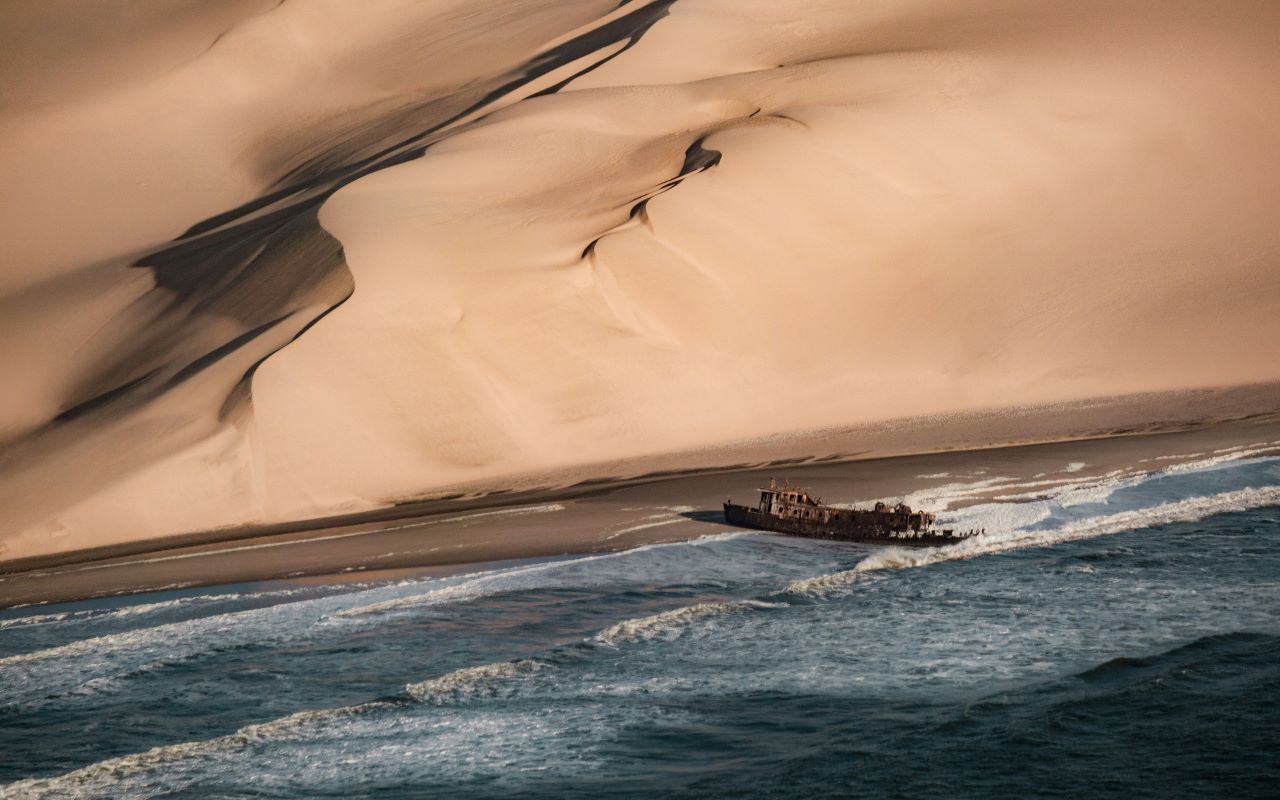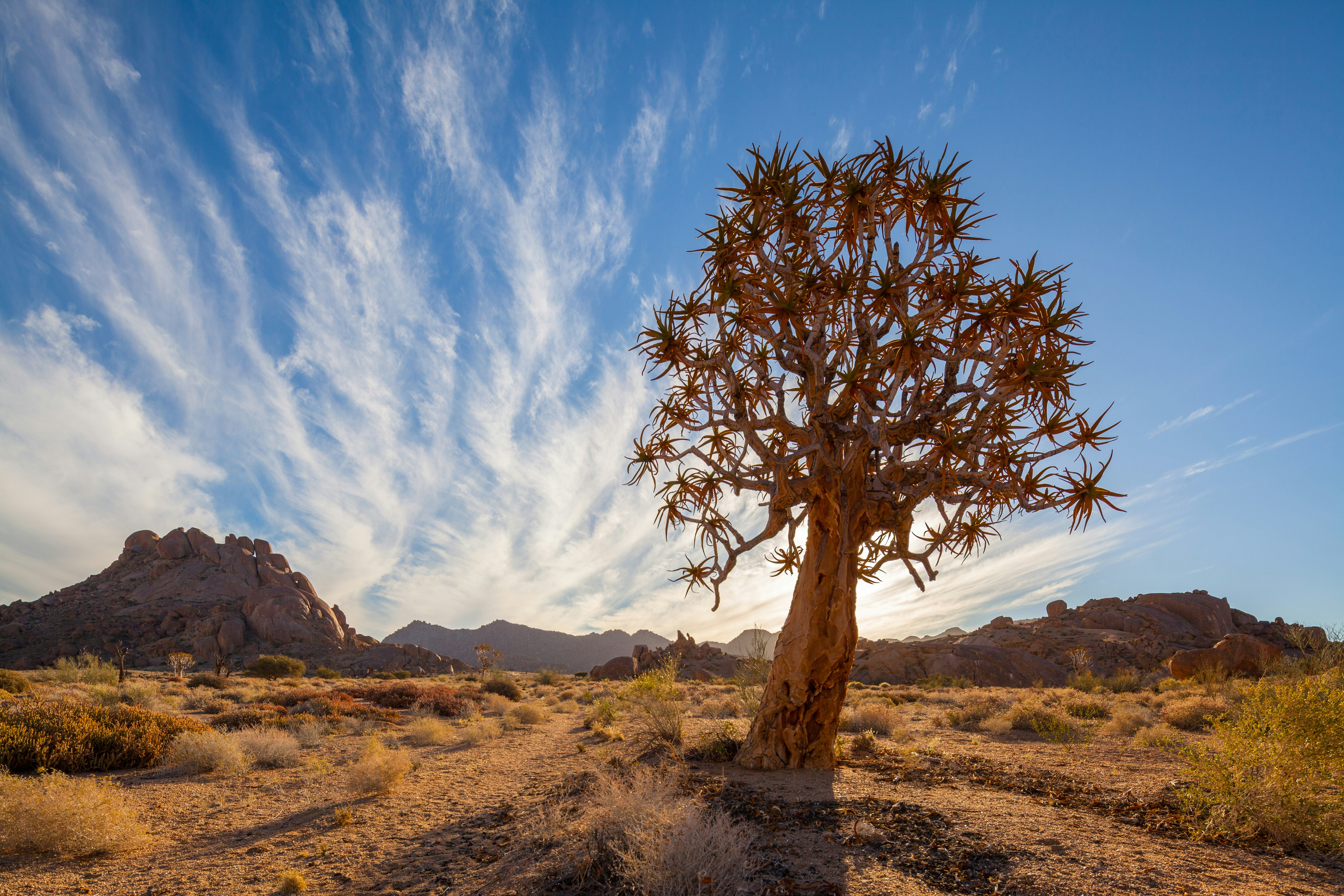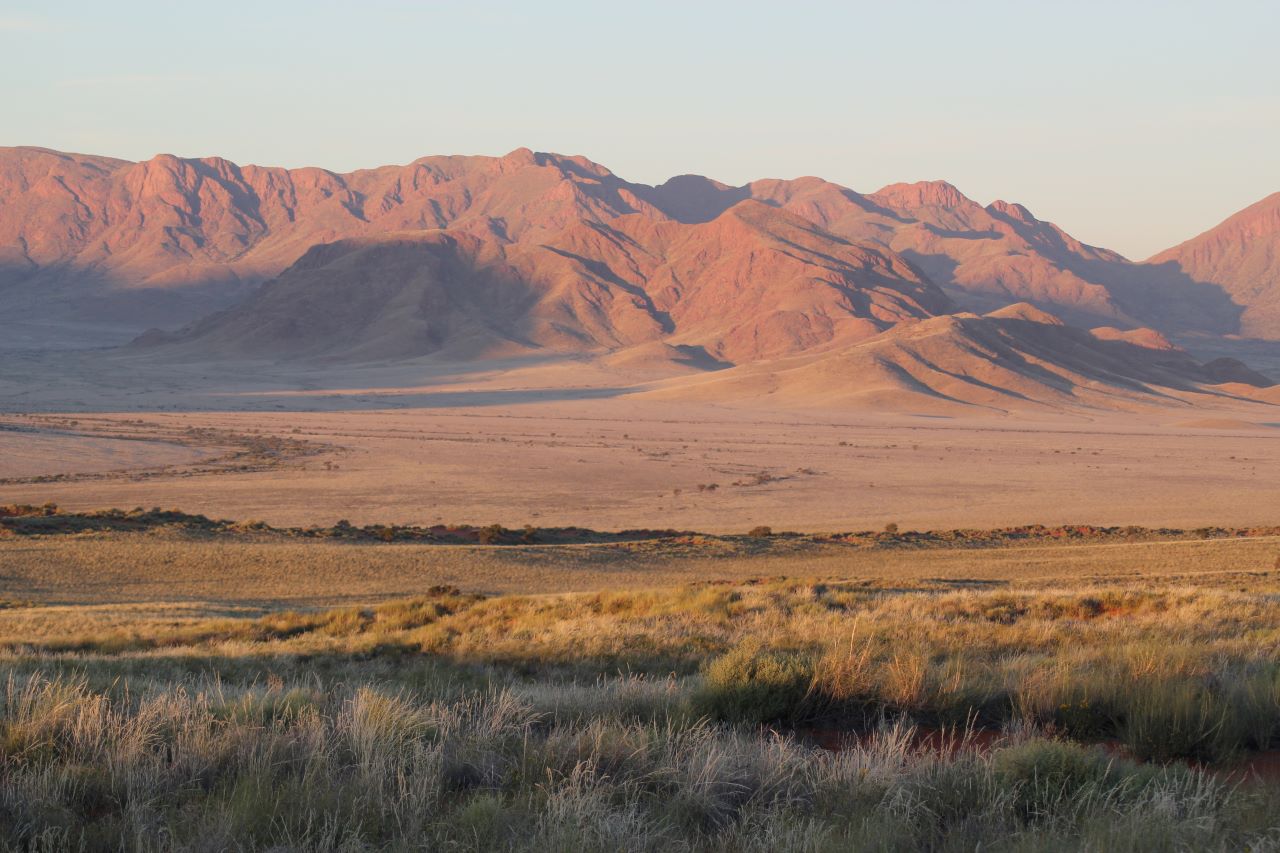Moon Landscape & Welwitschia – Swakopmund’s Desert Wonders
Swakopmund, Namibia, is a treasure trove of natural wonders, with landscapes that seem plucked from another world. One such marvel is the Moon Landscape—a surreal, rugged desert terrain that offers visitors a glimpse into Namibia’s ancient past. Alongside this awe-inspiring scenery, you’ll find the Welwitschia plant, one of the oldest and most fascinating species on Earth. Together, they create an unforgettable adventure for travellers who appreciate the unique beauty of the Namib Desert.
Discover the Moon Landscape
As you venture into the Namib Desert from Swakopmund, the scenery quickly transforms into a dramatic, otherworldly environment known as the Moon Landscape. Formed over millions of years by the Swakop River eroding the rocky terrain, this barren expanse of rolling hills and deep valleys resembles the surface of the moon. The harsh, dry environment and striking geological formations will leave you in awe as you explore this timeless land.
The best way to experience the Moon Landscape is by driving along the designated routes. Several viewpoints allow you to stop and take in the sweeping vistas, where the play of light and shadow across the rock formations creates a constantly shifting spectacle. Photographers, in particular, will appreciate the dramatic contrasts and unique shapes that seem to change with the time of day. Sunsets over the Moon Landscape are a sight to behold, as the golden hues of the setting sun bathe the rocky outcrops in a warm, ethereal glow.
Meet the Ancient Welwitschia Plant
While the Moon Landscape might steal the show at first glance, Namibia is home to an even more extraordinary natural wonder: the Welwitschia plant. This hardy desert plant, often referred to as a “living fossil,” has adapted to survive in the extreme conditions of the Namib Desert for thousands of years. Some Welwitschias are believed to be over 1,500 years old, making them one of the oldest living plants on Earth.
The Welwitschia is truly a curiosity. Its long, leathery leaves grow continuously, twisting and unpredictably spreading across the desert floor. These leaves gather moisture from the fog that regularly rolls in from the Atlantic Ocean, providing the plant with much-needed hydration in one of the driest regions on Earth.
To view the Welwitschia, you can follow the Welwitschia Drive, a well-marked route from Swakopmund that takes you deep into the heart of the Namib Desert. The drive itself is an adventure, as you’ll pass through vast stretches of desolate beauty before arriving at a specially protected area where some of the largest and oldest Welwitschias can be found. Don’t forget to bring your camera—this is a sight that deserves to be captured!
The Namib Desert A Photographer’s Dream
For avid photographers and nature enthusiasts, the combination of the Moon Landscape and Welwitschia viewing is an absolute must. The stark contrast between the rocky, barren Moon Landscape and the lush appearance of the Welwitschia plants creates a visual feast for anyone behind the lens.
The Namib Desert’s ever-changing light makes it a perfect destination for photographers seeking to capture the true essence of Namibia’s desert beauty. The early morning and late afternoon hours offer the best conditions, as the low angle of the sun creates long shadows that accentuate the textures and contours of the landscape.
Experience the Moon Landscape and Welwitschia Viewing
While you can explore the Moon Landscape and Welwitschia Drive on your own with a self-drive tour, many travellers prefer to join a guided excursion to gain deeper insights into the geology and ecology of the region. Local guides can share fascinating stories about the history of the desert, the wildlife that inhabits it, and the incredible adaptations of the Welwitschia plant.
Several guided tours depart from Swakopmund, ranging from half-day to full-day excursions. These tours often include additional stops, such as the scenic Khan River or Goanikontes Oasis, providing a more immersive experience of the Namib Desert’s wonders. If you’re interested in photography, some tours also cater specifically to photographers, ensuring you have the perfect vantage points to capture the best shots.
When to Visit
The Moon Landscape and Welwitschia plants can be visited year-round, but the best time to explore the region is during Namibia’s cooler months, from May to September. During this period, daytime temperatures are more comfortable, making it ideal for outdoor activities. However, even in the warmer months, the desert’s stark beauty is always worth the trip.
Best Activities in Swakopmund
While in Swakopmund, take advantage of the wide range of exhilarating desert activities on offer. You can embark on a Catamaran Cruise to explore the coastline, get your adrenaline pumping with Sandboarding or Quadbiking across the dunes, or experience the stunning desert landscapes on a Living Desert Tour. These adventures are perfect ways to fully immerse yourself in the unique beauty of the region.
Book Your Adventure Today!
Ready to experience the ancient wonders of the Namib Desert? Whether you’re intrigued by the surreal Moon Landscape, captivated by the unique Welwitschia plant, or simply looking for a desert adventure, a visit to these natural landmarks should be on your Namibian itinerary.
Contact us today to book your Moon Landscape and Welwitschia viewing tour! Our experienced team will help you plan the perfect trip, from self-drive routes to guided excursions, ensuring you make the most of your time in this incredible part of Namibia.
